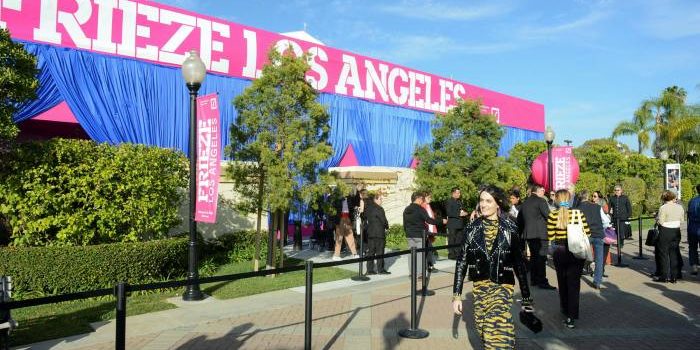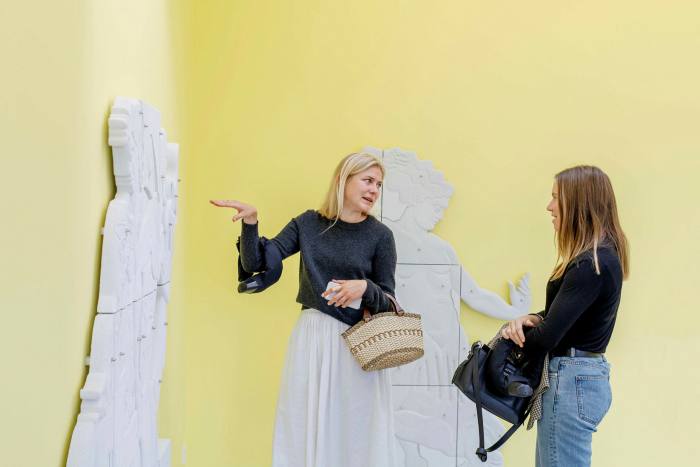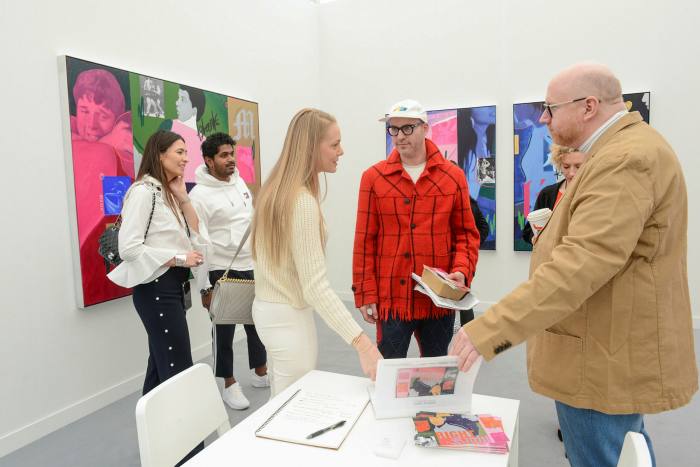Source: Financial Times.
If 2020 has taught us anything, it is that there is no such thing as a predictable year. But as we all try to make sense of a changed world here is a stab at how the art market’s slowdown in sales, drought of fairs and mass move online will play out over the next 12 months.
Art market sales in 2020 look to have fallen by at least a third across the industry, with galleries bearing the brunt. The key to 2021 will be whether art fairs bounce back. In 2019 these high-octane, temporary events accounted for an average 45 per cent of gallery sales. Come 2020, they were decimated.
Predicting when these global gatherings will come back is a Sisyphean task — they seem permanently to be about six months away. Some, such as Art Dubai, are sticking to their knitting and plan to open in their usual March slot. The more popular timing for a return comes a bit later in the spring, with the postponed Art Basel Hong Kong and Tefaf Maastricht kicking off the calendar in May.
Both fair organisers offered digital alternatives in 2020 with online viewing rooms, but it seems telling that this isn’t the preferred route going into the new year. While these vastly improved websites will continue to support such events and were better than nothing in 2020, they have run their course in their current forms.
The question is whether springtime is too soon for a full-scale fair — and my prediction is that it is. How and when vaccines are rolled out is still unclear and it seems unlikely to me that we will all be jumping on planes once a week again by then, if ever. There’s a valid view that fairs simply won’t come back the way they were, having already proved too time-consuming and costly for many even before the pandemic. As in other industries, most of the art market has been working from home, or at least from our hometowns, and we’ve found alternative ways of doing business.
Collectors say that the time not rushing around has helped them deepen their knowledge of art and appreciate it more when they do see works in-person, while gallerists have had the headspace to think more strategically about their businesses and the shows they want to put on. And we’ve all helped the planet to boot.
But dealers need to sell art and living artists in particular need them to do so too. Fair organisers who have realised that there is an area between the two poles of a large-scale event and a website are on to something. In 2020, fairs such as Copenhagen’s Chart and Nada Miami experimented with a multi-venue approach, under the umbrella of their brands. These are still temporary shows, so can generate excitement and the possibility of affiliated events, but are hosted through the individual galleries in their respective cities.
Fairs that are already committed to this format in 2021 include the Brafa fair for pre-contemporary art, which is normally held in Brussels but this year has its 126 exhibitors show individually in 37 cities (previews from January 27). Its website will be a back-up resource with all the works on offer in one place. Frieze Los Angeles plans a similar approach in July when it will spread galleries through architecturally significant buildings — though the logistics of getting around LA in high summer might make this a harder sell.
On the local level, it will become difficult to differentiate between such events and the existing gallery weekends or art weeks, but boundaries have been blurring for some time across all areas of the art market and it will be a case of survival of the fittest. The fairs will just have to prove that their brands, networks and organisational strengths are additive — which at this stage seems plausible.
Auction houses seemed to adapt more readily to virtual business in 2020, but their management also acknowledge that it is the real-life, event-based sales that really bring in the goods. I would expect many more auctions to be conducted online and via the new livestream technology than in 2019 — not least because management has invested considerably in some high-tech solutions. But where possible, and certainly for the higher-value items, the auction houses will try to bring back the in-person excitement. “We don’t want a future where everything in the art market goes online,” says Guillaume Cerutti, chief executive of Christie’s.
Activity-wise, optimists say supply will return, partly because discretionary sellers have been sitting on their hands for the best part of a year already — though pessimists are concerned that there will be more forced sellers, pushing values down and undermining market confidence.
Some decent consignments are already in the bag, mind — Christie’s has three major surrealist paintings to offer in March with a combined estimate of £32m. Plus, if we put the thorny issue of Brexit and its many unknowns to one side, global political uncertainties that impact the art market are generally reduced in 2021, now that the divisive US election has almost concluded.
Cerutti notes that the forced move online has brought in a new generation of buyers. At time of writing, Christie’s reported that 40 per cent of its buyers had come on stream since March 2020, of which 32 per cent were millennials. Buyers in Asia have proved particularly active and here, too, it’s about a younger generation, buying between $50,000 and $500,000.
Most of these have come to the art market via luxury goods, says Ben Clark of the art adviser Gurr Johns, another area that will continue to expand into the fine art world. To my mind, the stumbling block in Asia remains China’s increasing crackdown on freedoms, including now in Hong Kong, though on this front I would expect the art market to continue to turn a blind eye in the short term.
There has been considerable noise about art market disruption forced by the pandemic. Hopefully, some of the more inventive collaborations will continue. Initiatives such as augmented and virtual realities will keep testing appetites, while existing non-industry platforms such as Instagram will keep discovery alive.
There are some good ideas on the slate — including a fair-plus-auction event through a new platform called South South — but it will be a while before any feelgood factor really takes hold. This will prove more a year of rehabilitation than rip-roaring recovery.










